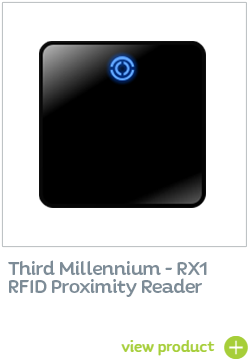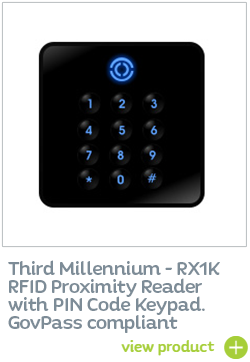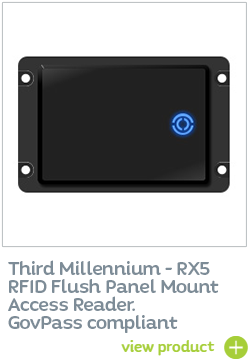Third Millennium Launches New QR Code Reader for Smarter Visitor Access Control
Introducing Third Millennium’s New QR Code Reader: Secure, Smart Visitor Access for the Modern Workplace
The world of access control has been transformed in recent years, with organisations seeking faster, smarter, and more cost-effective solutions to manage visitor flow and security. At the forefront of this change is Third Millennium. At their recent launch event, the company unveiled its latest innovation – a cutting-edge QR Code Reader that is set to redefine how businesses handle visitor management and temporary access.
With QR codes now an everyday part of our digital lives, from ticketing to payments, Third Millennium has brought this familiar technology into the access control ecosystem in a way that prioritises both convenience and security.
The Evolution of Visitor Management
Before the pandemic, visitor management was often a manual process. Larger organisations typically relied on reception staff to welcome guests, sign them in, and notify hosts of their arrival. This system was resource-heavy and often inefficient.
.jpg) As Steve Third Millennium explained:
As Steve Third Millennium explained:
'Pre-COVID, many companies had staff on reception to sign in visitors on paper. But when COVID came, a lot of those staff were no longer employed, and the market looked at how they could effectively notify employees that a visitor had arrived.'
This shift created a clear demand for a contactless, automated, and secure visitor management solution—and QR codes quickly rose to meet that need.
Why QR Codes for Access Control?
QR codes are not new, but their application in access control is relatively recent. By generating a temporary pass in the form of a QR code, organisations can grant visitors controlled entry to specific areas of a building.
Instead of static paper sign-in sheets, visitors now receive a QR code directly to their mobile phone or email. When scanned at the reader, the access control system instantly recognises the visitor, notifies their host, and grants them access according to pre-set permissions.
This ensures that organisations remain in full control of security while offering visitors a smoother and more professional experience.
A One-Piece, High-Security Design
Unlike some solutions that require separate hardware components, Third Millennium’s QR Code Reader is designed as a one-piece assembly. This provides a number of advantages:
- Simplified installation – fewer parts to connect and maintain.
- High-security data communication – ensuring encrypted transfer of access data.
- Multi-technology support – alongside QR functionality, the reader supports multiple access methods for flexible integration.
This combination of simplicity and advanced functionality sets the product apart in a competitive market.
How It Works: Temporary Visitor Passes Made Easy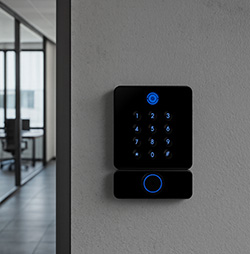
The process is simple yet powerful:
- Visitor registered – The host pre-registers the visitor within the access control system.
- QR code issued – A unique QR code is generated and sent to the visitor via email or mobile app.
- Arrival & scan – The visitor scans the QR code at the reader on arrival.
- System notification – The host receives an instant alert that their guest has arrived.
- Controlled access – Visitors can be granted access not just to reception but also to approved areas such as restrooms, canteens, or meeting rooms.
This approach eliminates the need for physical passes or reception staff, while still ensuring security and efficiency.
Addressing Security Concerns
One of the key points raised in the interview is that QR codes themselves are not inherently secure. Static QR codes, for example, can be copied or shared. However, Third Millennium’s solution is designed with these challenges in mind.
For higher-security applications, the system also supports dynamic QR codes, codes that continuously refresh in real time. This makes it impossible to share screenshots or duplicates, as the code is always changing.
As explained:
'Dynamic QR codes are already used widely in football and rugby ticketing, so they cannot be shared. They have a runtime and change all the time. You can’t do a screenshot or photocopy.'
This ensures that organisations can balance convenience with security, choosing the right configuration for their environment.
The Benefits of Dynamic QR for Businesses
By enabling dynamic QR codes, Third Millennium’s reader helps businesses achieve:
- Greater security – prevents sharing or duplication of access passes.
- Real-time control – instant revocation of access rights when required.
- Scalable visitor management – suitable for offices, stadiums, campuses, and other high-traffic environments.
- Improved visitor experience – seamless access without physical passes or unnecessary waiting.
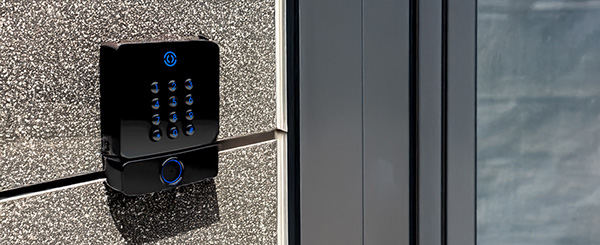
Future-Proofing Access Control Systems
The introduction of QR readers into the access control market represents more than just a trend—it’s a shift towards future-ready, hybrid systems. Organisations increasingly require solutions that combine:
- Multiple authentication methods (cards, biometrics, mobile, QR).
- Integration with visitor management software.
- Flexible, contactless options for diverse user groups.
Third Millennium’s new QR Code Reader is built with these demands in mind, offering a scalable and versatile platform that can evolve with the needs of any business.
A Game-Changer for Visitor Access
Third Millennium’s QR Code Reader represents a major step forward in access control technology. By combining the everyday familiarity of QR codes with the robust functionality of advanced security systems, the company has created a solution that is both user-friendly and future-proof.
Whether for office receptions, education campuses, or event venues, this new reader offers businesses the ability to streamline visitor management, reduce costs, and enhance security—all while providing a better experience for visitors.
As QR technology continues to evolve, dynamic QR codes will play an increasingly important role in ensuring that convenience never comes at the expense of security.
Third Millennium has once again demonstrated why it is a leading innovator in access control, with a product that meets the needs of today while anticipating the challenges of tomorrow.
Find out more from Third Millennium...
-
The Power of Third Millennium UK manufactured Access Readers
-
CIE announces strategic partnership with Third Millennium Access Readers
Available to order now from CIE
Visit our Dual Function QR Code and RFID Access Reader product page for detailed product specifications, installation resources and video demos.
|
|
Featured Products

